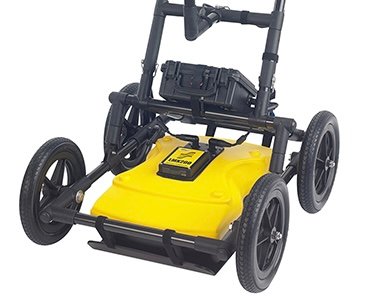Comparing Metal Detectors and Radar Penetration Systems: A Comprehensive Analysis
Metal detectors and radar penetration systems are two widely used technologies for detecting metal objects and underground structures, respectively. While both serve important purposes in various industries, understanding their working principles, detecting capabilities, applications, pros and cons, cost analysis, and maintenance considerations can help determine which system is best suited for specific needs.

Working Principles of Metal Detectors and Radar Penetration Systems
Metal detectors operate on the principle of electromagnetic induction. When a metal object passes through the detector’s coil, it generates an electromagnetic field that is detected by the receiver. The change in the electromagnetic field alerts the operator of the presence of metal.
Radar penetration systems, on the other hand, use electromagnetic waves to penetrate the ground and detect underground structures. These systems emit radio waves that bounce off objects and return to the receiver, providing information about the depth and composition of the objects.
Detecting Capabilities: Metal Detectors vs. Radar Penetration Systems
Metal detectors excel at detecting small metallic objects such as weapons or jewelry, even in crowded environments. They are commonly used in airports, public events, and archaeological excavations. However, they have limited penetration capabilities and cannot detect non-metallic objects.
Radar penetration systems, on the other hand, can detect both metallic and non-metallic objects, including underground structures, pipes, and cables. They provide a detailed underground map, allowing for better planning and analysis. Their detecting range and depth can vary depending on the system’s power and frequency.
Applications of Metal Detectors in Various Fields
Metal detectors find applications in a wide range of fields. In the security sector, they are used to screen individuals and prevent the entry of weapons. In the mining industry, metal detectors are utilized to locate valuable minerals and ores. Archaeologists use them to discover buried artifacts, while the food industry employs them to ensure product safety and quality.
Applications of Radar Penetration Systems in Various Fields
Radar penetration systems have diverse applications. In construction, they are employed to detect underground utilities and structures before excavation. Law enforcement agencies utilize them to locate hidden tunnels or underground hideouts. In the geophysical field, these systems assist in soil analysis and geological surveys. Additionally, they are used for environmental monitoring and in agriculture to assess soil moisture and detect buried root systems.
Pros and Cons of Metal Detectors in Security Applications
One advantage of metal detectors in security applications is their ability to quickly detect metallic objects on individuals. They are non-invasive and provide immediate results. However, they can be fooled by certain materials like plastics or ceramics, and they do not provide information about the location or nature of the detected objects.
Pros and Cons of Radar Penetration Systems in Security Applications
Radar penetration systems offer a more comprehensive approach to security applications. They can penetrate various materials, including concrete and soil, providing detailed information about the detected objects’ depth and composition. However, they require expertise to interpret the data accurately, and the scanning process can be time-consuming.
Cost Analysis: Metal Detectors vs. Radar Penetration Systems
Metal detectors are generally more affordable compared to radar penetration systems. Their compact size and ease of use make them accessible for a wide range of applications. Radar penetration systems, on the other hand, are more expensive due to their complex technology and higher accuracy. The cost may vary depending on the specific requirements and system capabilities.
Maintenance and Operational Considerations for Metal Detectors
Metal detectors require minimal maintenance, with most models being portable and easy to operate. Regular calibration and occasional coil replacement are recommended to ensure accurate detection. Additionally, proper training of operators is crucial to maximize their effectiveness.
Maintenance and Operational Considerations for Radar Penetration Systems
Radar penetration systems are sophisticated devices that require regular maintenance and calibration to ensure accurate readings. The operators need to have a good understanding of the system’s capabilities and limitations to interpret the data correctly. Proper storage and protection from environmental factors like dust and moisture are also vital for their longevity.
Case Studies: Successful Uses of Metal Detectors
In a case study conducted at an international airport, metal detectors successfully identified concealed weapons and prohibited items, preventing potential security threats. Another case study in the mining industry highlighted how metal detectors helped locate valuable deposits, resulting in increased productivity and profitability.
Case Studies: Successful Uses of Radar Penetration Systems
In a construction project, a radar penetration system accurately detected the location of underground utilities, preventing costly damages during excavation. Another case study showcased the use of radar penetration systems in law enforcement to uncover hidden tunnels and seize illegal contraband.
A Comprehensive Comparison
In conclusion, both metal detectors and radar penetration systems have unique capabilities and applications in various fields. Metal detectors excel at quickly detecting metallic objects in crowded environments, while radar penetration systems provide detailed information about underground structures and non-metallic objects. The choice between them depends on the specific requirements, cost considerations, and expertise available. Understanding the pros and cons, as well as maintenance and operational considerations, is crucial to making an informed decision for optimal performance and success in different industries.
